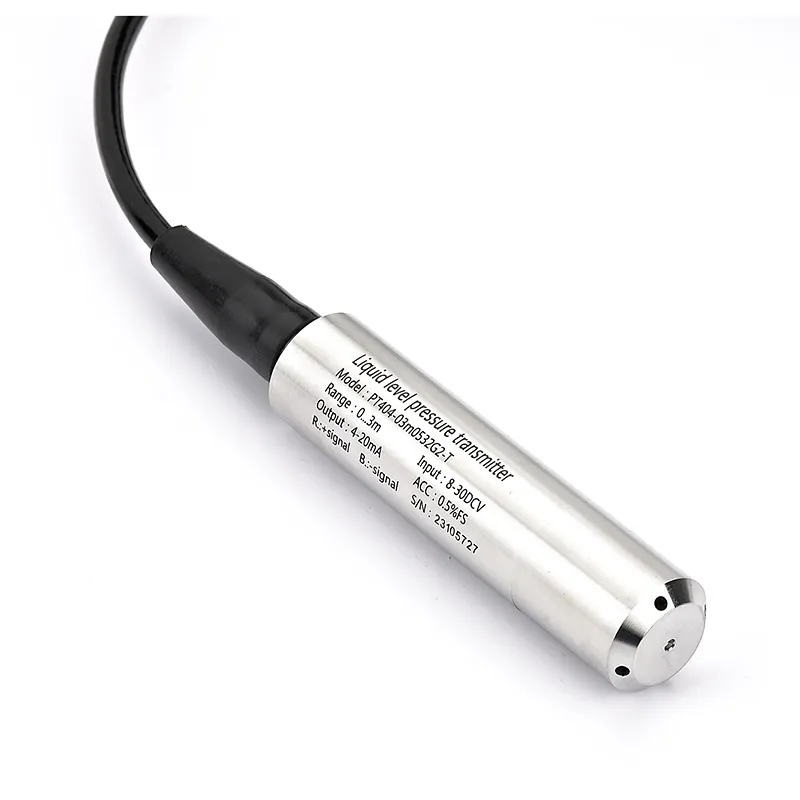Understanding Liquid Level Pressure Transmitters: The Key to Accurate Level Measurement
2024-11-01
In industrial processes and applications, accurate measurement of liquid levels is critical for efficiency, safety, and compliance. Among the various technologies available for this purpose, liquid level pressure transmitters play a vital role in providing reliable and precise data for monitoring and controlling liquid levels in tanks, reservoirs, and other containment systems. This blog will explore what liquid level pressure transmitters are, how they work, their applications, and the benefits they offer in various industries.
What is a Liquid Level Pressure Transmitter?
A liquid level pressure transmitter is an electronic device used to measure the level of liquids in tanks or other storage containers. It operates by measuring the pressure exerted by the liquid column above it, which correlates to the liquid level. These transmitters convert the measured pressure into an electrical signal that can be displayed, recorded, or used for control purposes in a process system.
How Do Liquid Level Pressure Transmitters Work?
Liquid level pressure transmitters function based on the hydrostatic pressure principle. Here’s how the process typically works:
1. Pressure Measurement: The transmitter is installed at the bottom of the tank or container, where it is in contact with the liquid. As the liquid level changes, the pressure at the bottom of the tank varies accordingly. The pressure exerted by the liquid column is directly proportional to the height of the liquid.
2. Signal Conversion: The pressure sensor within the transmitter detects the applied pressure and converts it into an electrical signal. This signal is typically in the form of a 4-20 mA output, which is standard for industrial applications. The lower end of the range (4 mA) represents the minimum level, while the upper end (20 mA) indicates the maximum level.
3. Data Transmission: The electrical signal is transmitted to a control system or monitoring device, such as a PLC (Programmable Logic Controller) or a SCADA (Supervisory Control and Data Acquisition) system. This allows for real-time monitoring and control of the liquid level.
4. Calibration: Liquid level pressure transmitters can be calibrated to account for the specific characteristics of the liquid being measured, such as density and temperature, ensuring accurate level readings.
Applications of Liquid Level Pressure Transmitters
Liquid level pressure transmitters are widely used in various industries due to their versatility and reliability. Some common applications include:
1. Water and Wastewater Treatment: In water treatment plants, these transmitters monitor water levels in reservoirs, settling tanks, and treatment basins. They help manage water flow and ensure optimal treatment processes.
2. Chemical Processing: In chemical plants, accurate liquid level measurement is critical for maintaining process control and safety. Liquid level pressure transmitters help prevent overflows, leaks, and other hazardous situations.
3. Oil and Gas Industry: These transmitters are used to monitor liquid levels in storage tanks, separators, and other equipment in the oil and gas sector. They play a crucial role in ensuring safe and efficient operations.
4. Food and Beverage Industry: In the food and beverage industry, maintaining the correct liquid levels in processing tanks is essential for product quality. Liquid level pressure transmitters help ensure that production processes run smoothly.
5. Pharmaceutical Manufacturing: Accurate liquid level measurement is vital in pharmaceutical production to maintain compliance with strict regulations. These transmitters help monitor and control liquid levels in mixing tanks and other equipment.
Benefits of Liquid Level Pressure Transmitters
The use of liquid level pressure transmitters offers numerous advantages for industrial applications:
1. High Accuracy: These transmitters provide precise measurements, which are essential for maintaining optimal process conditions and ensuring product quality.
2. Reliability: Designed to withstand harsh industrial environments, liquid level pressure transmitters are built for durability and longevity, reducing the need for frequent replacements.
3. Versatility: They can be used with a wide range of liquids, including corrosive, viscous, and varying-density fluids, making them suitable for diverse applications.
4. Real-Time Monitoring: By providing continuous level measurement, these transmitters enable operators to monitor liquid levels in real time, allowing for quick responses to changes in the process.
5. Integration with Automation Systems: Liquid level pressure transmitters can easily integrate with existing automation and control systems, enhancing overall process efficiency.
Conclusion
Liquid level pressure transmitters are essential tools for accurate and reliable liquid level measurement in various industrial applications. By leveraging the hydrostatic pressure principle, these devices provide real-time data that help operators manage processes effectively, ensuring safety, efficiency, and compliance.
As industries continue to embrace automation and smart technologies, the role of liquid level pressure transmitters will only grow in importance. Their ability to deliver precise measurements and integrate seamlessly with control systems makes them indispensable for modern industrial processes. In an era where efficiency and accuracy are paramount, investing in quality liquid level pressure transmitters can significantly enhance operational performance and contribute to overall success in any industry.



